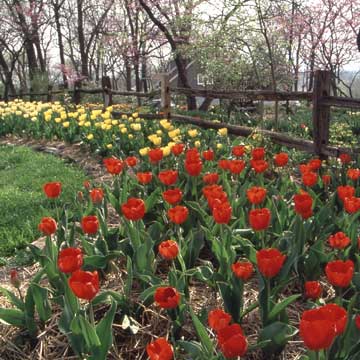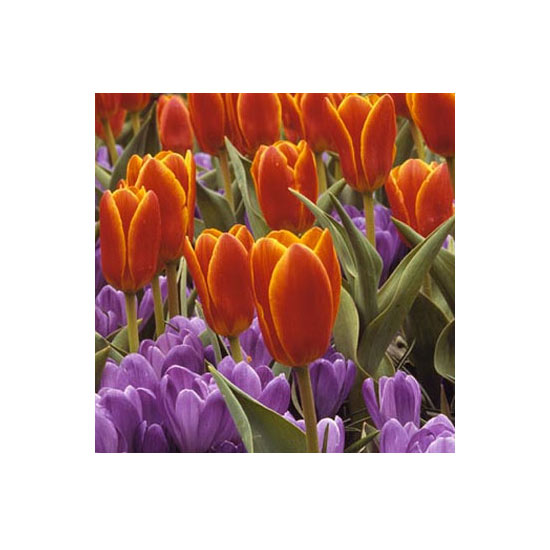





 For the best effect, plant bulbs
in large drifts rather than
single file.
For the best effect, plant bulbs
in large drifts rather than
single file.
Plant hardy bulbs anytime in fall before the soil freezes, but it's best to plant them early enough so the root systems can grow before extremely cold weather arrives. In some climates, you can plant until Thanksgiving, even Christmas. Late-planted bulbs will develop roots in spring and may bloom later than normal; they'll get back on schedule the following year. Water the bulbs after planting to stimulate the roots to grow.
Positioning bulbs at their proper depth helps ensure their longevity. Generally bulbs should be planted so the bottom rests at a depth that's two-and-a-half times the bulb's diameter. In well-drained or sandy soil, plant an inch or two deeper to increase longevity and discourage rodents.
Related Chart: Planting Depth for Spring Bulbs
Related Slide Show: Best Bulbs for Spring
continue reading below Interplanting bulbs that bloom at
about the same time gives you
twice the show in half the space.
Interplanting bulbs that bloom at
about the same time gives you
twice the show in half the space.
Because bulbs look best planted in groups, you are better off using a garden spade instead of a bulb planter, which encourages you to plant bulbs singly. A spade makes it easier to set bulbs side by side in large groups. Plant groups of bulbs in holes no smaller than a dinner plate, or dig wide, curving trenches and position the bulbs in the bottom.
Layer different types of bulbs from bottom to top in the same hole to create companion plantings or a succession of bloom in a given location. For example, dig a 6-inch-deep hole and place several Dutch hyacinths in the bottom, lightly cover them with soil, then plant a handful of grape hyacinths at a 5-inch depth. The two types of hyacinths bloom at the same time in spring. The grape hyacinths create a softening skirt beneath the more massive Dutch hyacinths. As another benefit, the leaves of the grape hyacinth bulbs appear in autumn and remain all winter, providing a marker for the dormant Dutch hyacinth bulbs, so you won't inadvertently plant on top of the hyacinths or dig them up.
Interplanting provides maximum flowers in the smallest space and eliminates bare spots where bulbs go dormant. To create a succession of bloom and foliage, plant perennials around the bulb holes. As the bulb foliage dwindles, the perennials will grow up, camouflaging the bulbs' yellowing leaves. This interplanting technique works in both formal and informal gardens.
Copyright © www.100flowers.win Botanic Garden All Rights Reserved